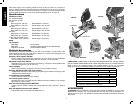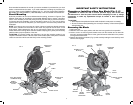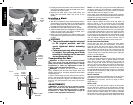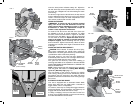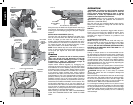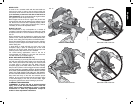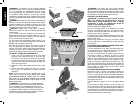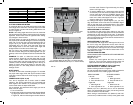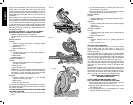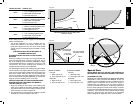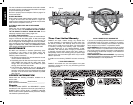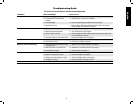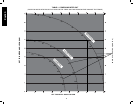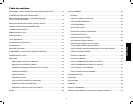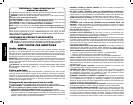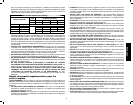
English
12
hang up on the workpiece. If this occurs, simply place your
right thumb on the upper side of the guard and roll the
guard up just enough to clear the workpiece, as shown in
Figure 28. Once you have cleared the workpiece, you can
release the guard and it will continue to open as the cut
progresses.
When mitering to the right side of a base molding wider
than 3.5" (88.9 mm) standing vertically against the fence
as in Figure 25, the saw can only cut through the board up
to 1 inch from the end of the board. Trying to cut more than
an inch will cause the saw’s gear case to interfere with the
workpiece. If you want to cut base molding between 3-1/2"
(88.9 mm) and 4.25" (107.95 mm) wide vertically follow
the directions below.
CUTTING 3.5" (88.9 mm)– 4.25" (107.95 mm) BASE
MOLDING VERTICALLY AGAINST THE FENCE
• Position molding as shown in Figure 25.
• All cuts made with the back of the molding against the
fence
INSIDE CORNER:
Left side
1. Position molding with bottom of molding against
the base of the saw
2. Miter left 45°
3. Save left side of cut
Right side
1. Position molding with top of the molding resting on
the base of the saw
2. Miter left 45°
3. Save left side of cut
OUTSIDE CORNER:
Left side
1. Position molding with bottom of molding against
the base of the saw
2. Miter right 45°
3. Save left side of cut
NOTE: If the cut must be made somewhere other than
1" from the end of the molding: cut off the molding at
90° approx. 1" (25.4 mm) longer than your final length
then make the miter cut as described above.
Right side
1. Position molding with bottom of the molding
against the base of the saw
2. Miter left 45°
3. Save the right side of cut
A third method of making the cut necessary is to make a
zero degree miter, 45° bevel cut. Your saw can cut a bevel
6.2" (157.5 mm) wide.
CUTTING BASE MOLDING LAYING FLAT AND USING
THE BEVEL FEATURE
• All cuts made with the saw set at 45° bevel and 0
miter.
• All cuts made with back of molding laying flat on the
saw as shown in Figures 26.
• Move the left side fence out of the path of the blade
before attempting any of the following cuts.
INSIDE CORNER:
Left side
1. Position molding with top of molding against the fence
2. Save left side of cut
Right side
1. Position molding with bottom of the molding against
the fence
2. Save left side of cut
OUTSIDE CORNER:
Left side
1. Position molding with bottom of the molding against
the fence
2. Save right side of cut
Right side
1. Position molding with top of molding against the
fence
2. Save right side of cut
CUTTING CROWN MOLDING
Your miter saw is better suited to the task of cutting
crown molding than any tool made. In order to fit
properly, crown molding must be compound mitered with
extreme accuracy.
The two flat surfaces on a given piece of crown molding
are at angles that, when added together, equal exactly 90°.
Most, but not all, crown molding has a top rear angle (the
section that fits flat against the ceiling) of 52° and a bottom
rear angle (the part that fits flat against the wall) of 38°.
Your miter saw has special pre-set miter detent points at
31.62° left and right for cutting crown molding at the proper
angle (Fig. 27). There is also a mark on the Bevel scale
at 33.85°.
The chart below gives the proper settings for cutting crown
molding. (The numbers for the miter and bevel settings are
very precise and are not easy to accurately set on your
saw.) Since most rooms do not have angles of precisely
90°, you will have to fine tune your settings anyway.
PRETESTING WITH SCRAP MATERIAL IS
EX TREME LY IMPORTANT!
FOR CUTTING CROWN MOLDING LAYING
FLAT AND USING THE COMPOUND FEATURES
1. Move the left side fence out of the path of the blade
before attempting any of the following cuts.
2. Molding laying with broad back surface down flat on
saw table (Fig. 29).
3. The settings below are for all Standard (U.S.) crown
molding with 52° and 38° angles.
FIG. 26
FIG. 27
FIG. 28



